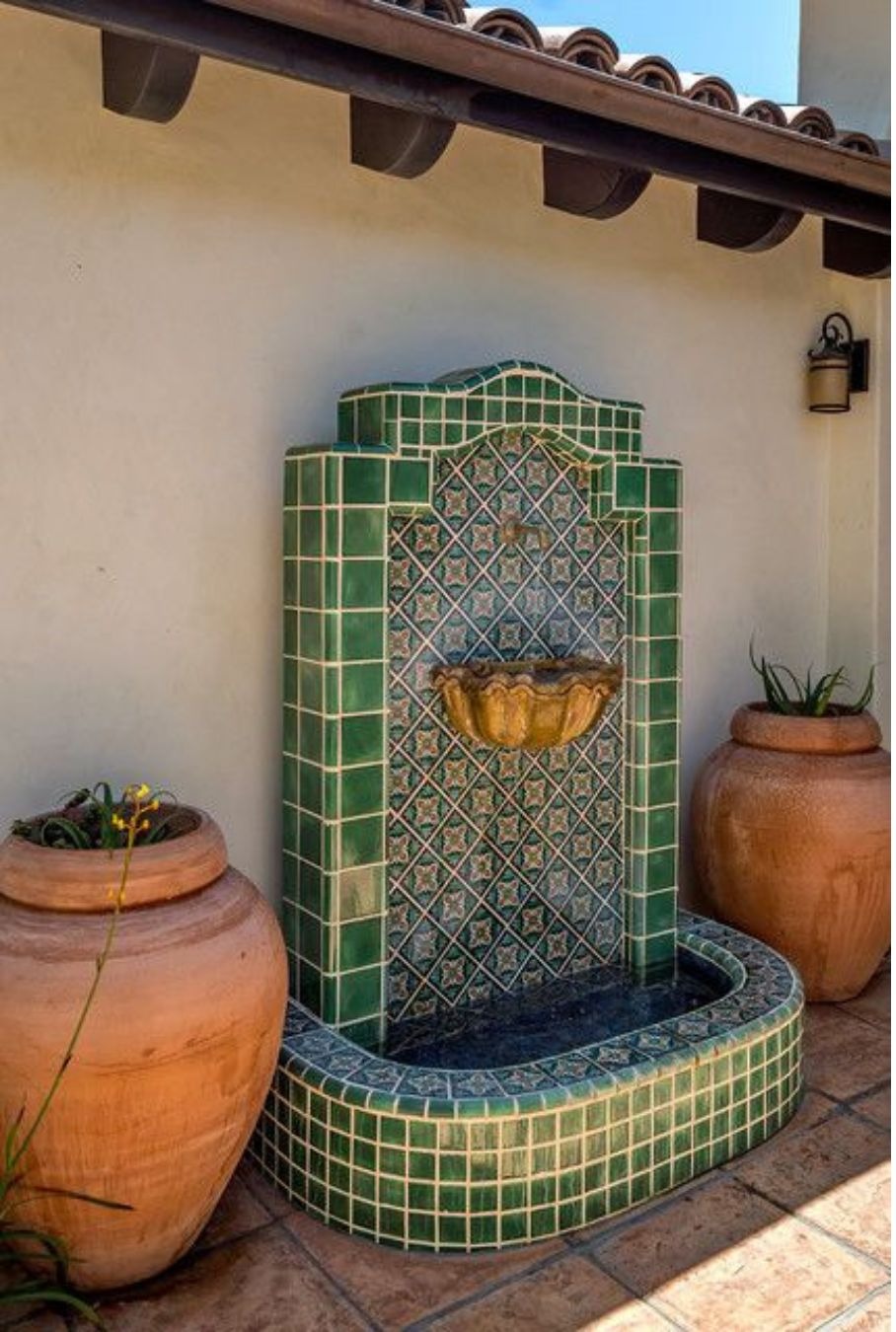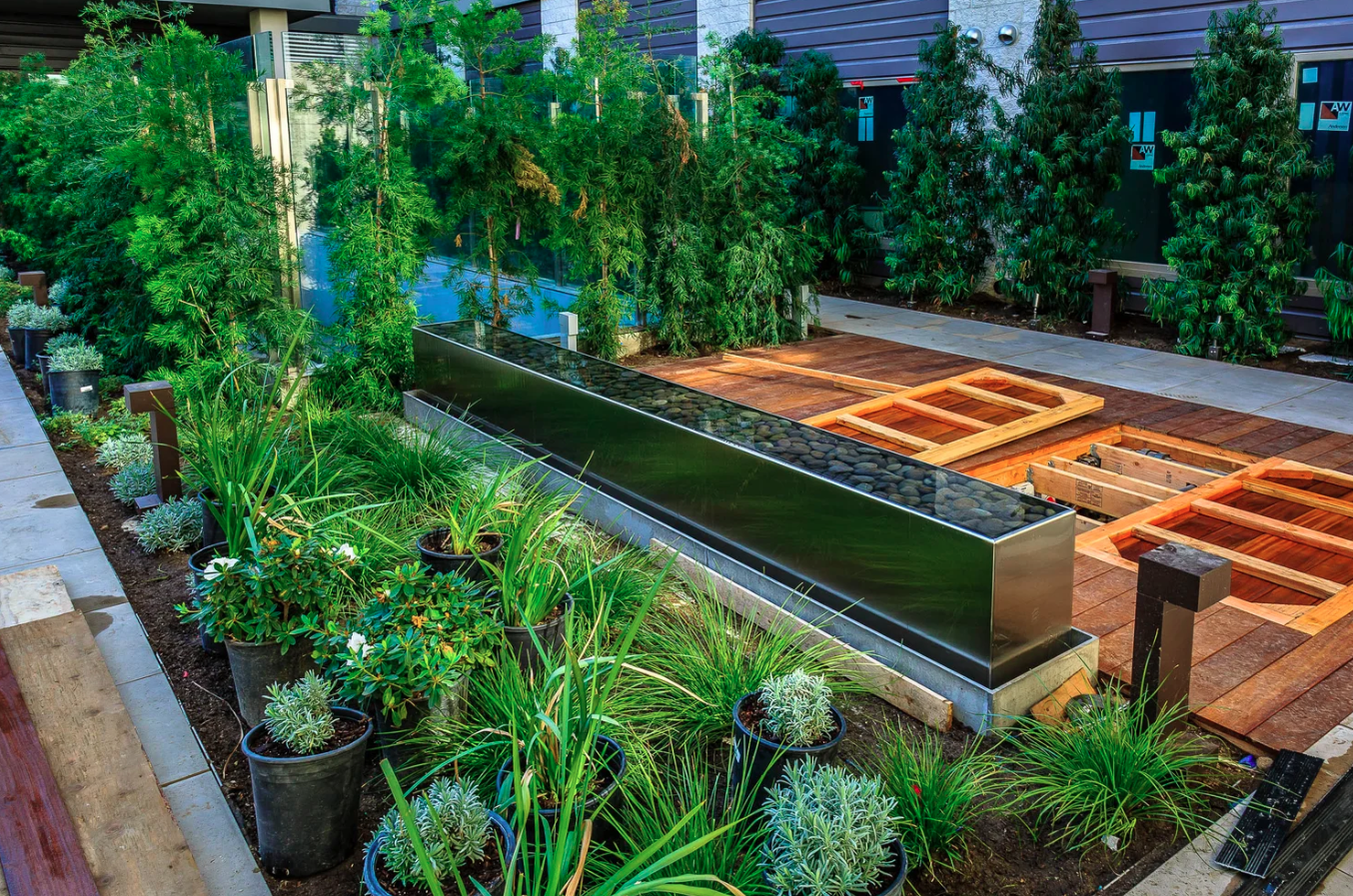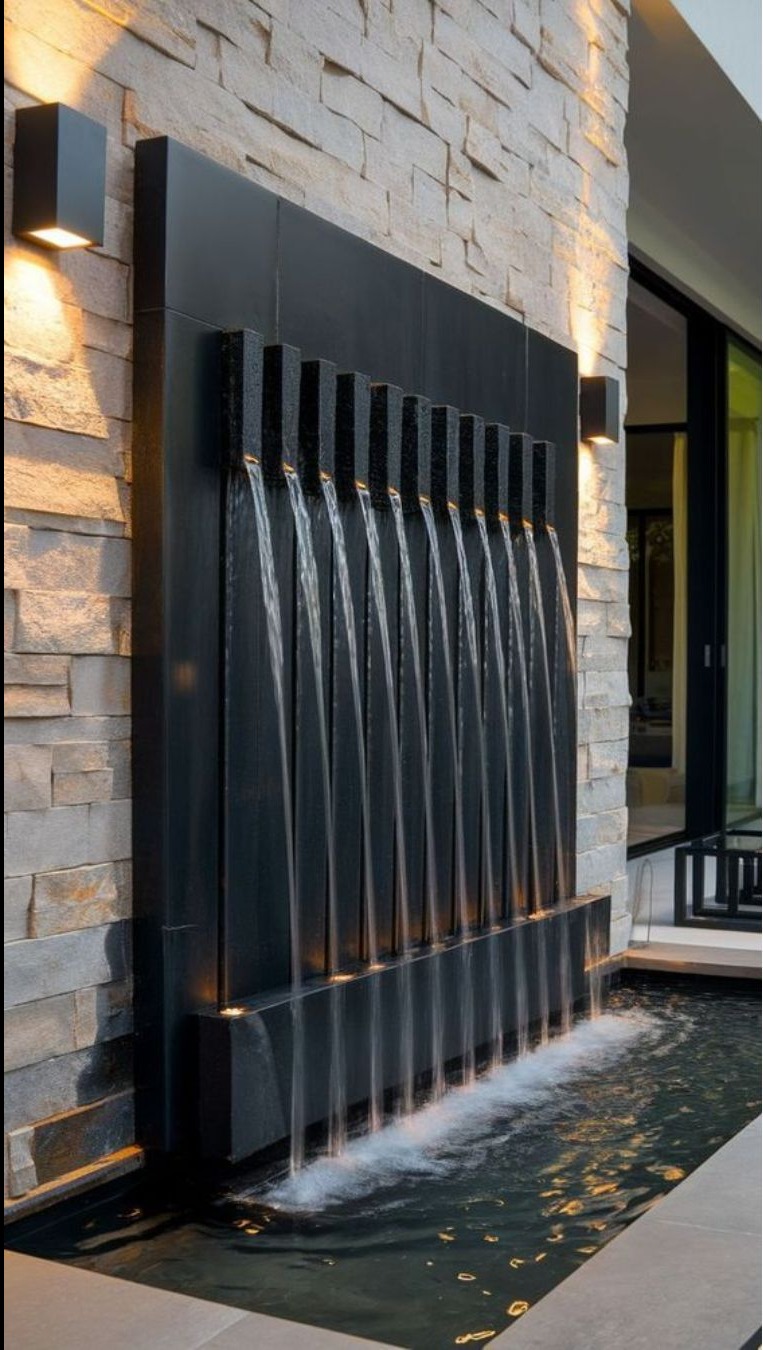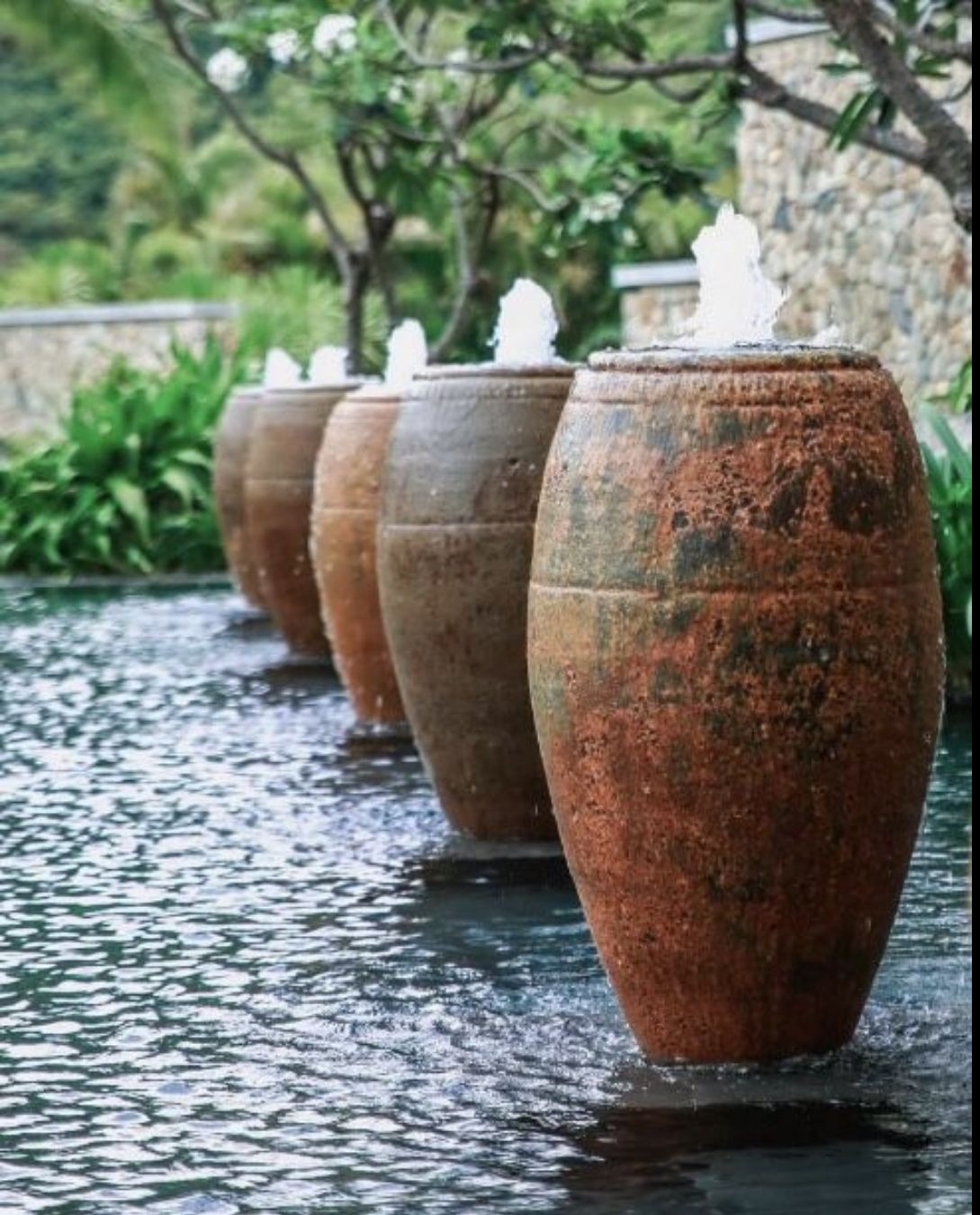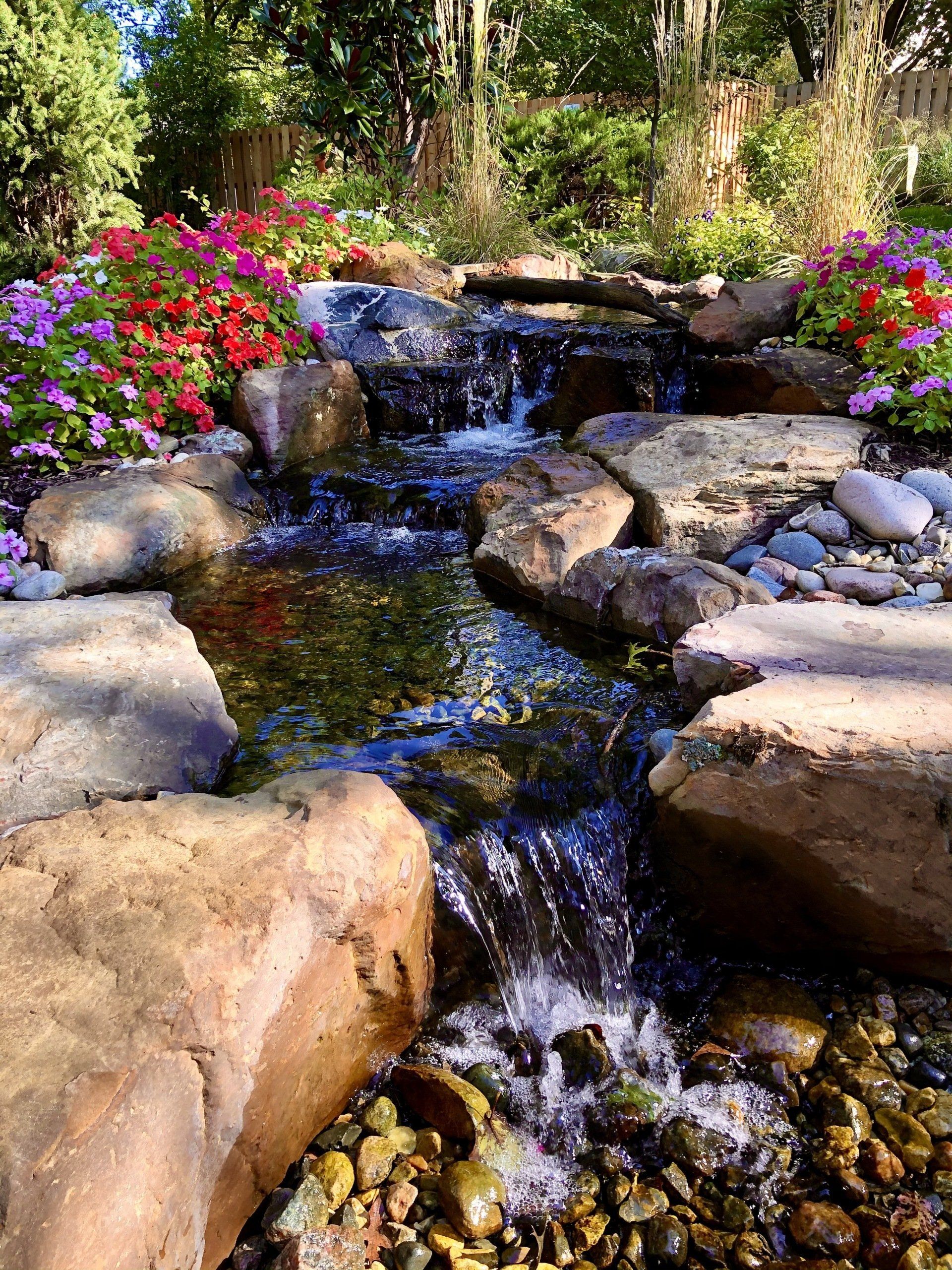
What’s an ecosystem pond?
Natural ponds, streams, and waterfalls keep themselves clean. They each have an active ecosystem made up of water, plants, rocks, algae, animals, and more. These pieces all work together to keep the water healthy and beautiful.
So when it comes to koi ponds and pondless waterfalls, there’s no reason to try to outdo Mother Nature. The water features we create are based on the same principles. The result is low-maintenance ponds that are clean and healthy. Here’s how it works.
The components of an ecosystem pond
Every piece of a pond ecosystem does an important job:
*Circulation – Stagnant water is like a bored teenager: up to no good. Moving water provides the oxygen needed to keep fish and plants healthy. For manmade water features, circulation is created with carefully planned pumps and plumbing.
*Filtration – A mechanical filter skims debris from the water’s surface. And a biological filter provides surface area for beneficial bacteria to live. These bacteria help keep water clear.
*Plants – And if you want to talk filtration, let’s talk plants. They pull excess nutrients from the water, which means algae have less to eat. Less food for algae means less algae in the water.
*Fish – Instead of adding to pond maintenance, fish really clean up. They graze on algae and feed off the pond floor. They thrive eating the stuff that can muck up a pond.
*Rocks, gravel, and bacteria – Sure, rock gives a pond its shape. But large rocks as well as the gravel at the bottom of a pond help keep the water clean. They provide a home for helpful bacteria that eat fish waste and plant matter that falls to the bottom of the pond.
Parts of an ecosystem pond work together
A healthy pond ecosystem is all about balance. Keep these things in mind:
*Stuff gets into water. Whether it’s fish waste or leaves from a neighboring tree, there’s always something capable of gunking up a pond. Even if you’re out there every day with a net, it’s impossible to get it all. That’s why you need that circulation/filtration/bacteria/plant combo.
*Don’t blame the plants! Aquatic plants work hard to keep water clean. Consider them at every level: deep water, marginal and floating. They are so valuable in creating and maintaining a clear water.
*Don’t blame algae, either. Believe it or not, you should always have some algae in the water. Algae absorb the nitrates that are left after beneficial bacteria have eaten up plant and fish waste. Algae can be like bussers at a restaurant – quietly removing what’s left over. But you don’t want 17 bussers fighting over your plate – and you don’t want too many algae, either.
*Rock is amazing. Not only does rock create a unique landscape for your water feature, but it also protects your pond liner.
*It’s possible to correct a pond ecosystem. If your water feature gets out of whack, all is not lost. You can introduce more beneficial bacteria. And a professional review of your circulation and filtration systems can identify issues and suggest fixes.
Create an ecosystem pond in your space
An ecosystem pond is chemical free and low maintenance. You’ll spend less time working on your water feature and more time enjoying it.
Keywords
net
good
home
mind
space
pumps
stuff
shape
Parts
clean
fixes
level
whack
plate
pieces
reason
result
issues
oxygen
debris
gravel
bottom
things
bussers
streams
balance
animals
plumbing
nitrates
something
less time
koi ponds
Less food
restaurant
pond liner
components
fish waste
many algae
pond floor
less algae
deep water
large rocks
clear water
plant matter
Moving water
surface area
chemical free
Mother Nature
Natural ponds
important job
Stagnant water
ecosystem pond
Aquatic plants
bored teenager
same principles
low maintenance
excess nutrients
unique landscape
active ecosystem
pond maintenance
neighboring tree
helpful bacteria
biological filter
filtration systems
pondless waterfalls
professional review
beneficial bacteria
low-maintenance ponds
healthy pond ecosystem
manmade water features
mechanical filter skims
circulation/filtration/bacteria/plant combo

